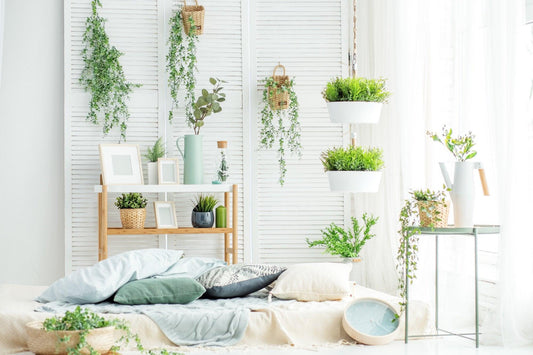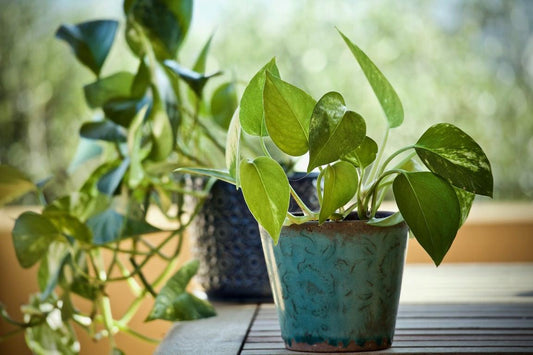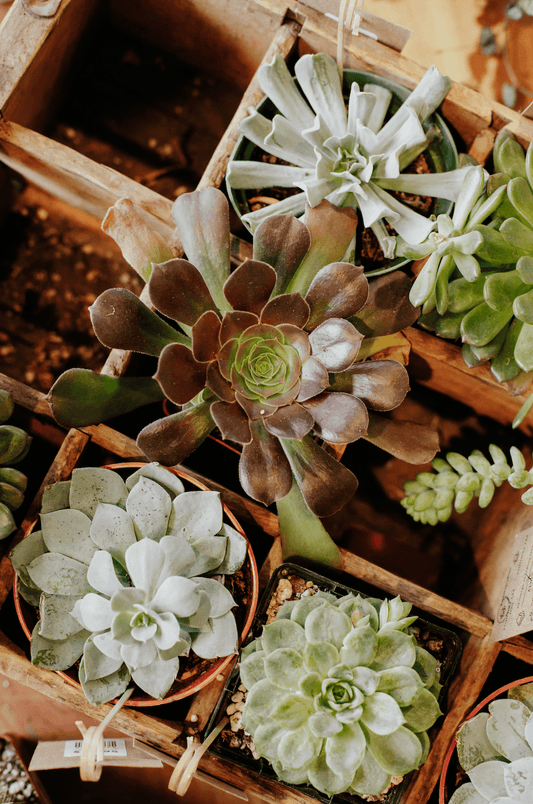66% of American households understand a profound secret - houseplants are more than mere decorations. They are silent allies, providing an array of benefits. They reduce stress levels, boost productivity by up to 15%, and offer an alluring charm that ties together any room decor.
But how do you choose the right plants and where do you place them for the optimal effect? How can your interior design style embrace the natural world and seamlessly integrate live plants to create an indoor sanctuary?
This guide will help you explore the different styles of interior design that beautifully incorporate plant life, while balancing your space with the essentials of natural light and green thumb expertise.
The Magic of Greenery
Think of plants as the life force in your home, gracing spaces with color, texture, and vitality. When incorporated into interior design, plants become more than just accessories. They're integral elements that add depth and character to your space.
This harmonious union of flora and decor is not just aesthetically pleasing, it also serves a functional purpose, promoting a sense of wellness.
Plants are a source of life, emitting oxygen while absorbing carbon dioxide. This natural air filtering can make your home feel fresher and more invigorating. They also release moisture into the air which helps to maintain a healthy level of indoor humidity.
Research shows that having plants around can even boost your mood and productivity, an essential aspect of any living or working space.
People with a green thumb know the joy that gardening brings. It's a hobby that keeps you engaged, provides a sense of accomplishment, and connects you with nature, even within the four walls of your home.
Cultivating plants can be therapeutic. It offers an escape from the hustle and bustle of daily life.
Different plants bring different vibes to your home. A tall, slender snake plant or a vibrant rubber tree can act as a focal point, while a delicate fern or a hanging spider plant can add a splash of texture and color to any corner. Using plants creatively can enhance any design style, be it minimalistic, bohemian, or traditional.
A Splash of Natural Light
Light plays a pivotal role in any interior design setup. It can change the perception of space, highlight architectural features, and set the mood of a room. When it comes to incorporating plants into your interior design, natural light becomes even more crucial.
Each plant has its own light requirements. Some plants thrive in bright, direct sunlight, while others prefer low-light conditions. It's crucial to consider these needs when planning your indoor garden aesthetic.
Positioning your plants correctly according to the natural light sources in your home can help them flourish and can also influence the overall aesthetic of your space.
Large windows that let in ample natural light can be an ideal spot for sun-loving plants such as succulents, cacti, or spider plants. For spaces with limited natural light, consider shade-loving plants like snake plants, peace lilies, or ZZ plants. These plants can thrive even in dim corners, breathing life into otherwise dull spaces.
Besides catering to plant needs, natural light plays a key role in enhancing the beauty of your interior space. A well-lit room feels airy, spacious, and welcoming. The interplay of natural light and plants can create fascinating shadow patterns and add an element of dynamic beauty to your decor.
A strategic use of mirrors can also help to amplify natural light which makes your space feel larger and brighter. Placed correctly, they can reflect light onto your plants and give them the sunshine they need while adding a visual interest to your interior design.
Different Styles of Interior Design
The beauty of interior design lies in its ability to take on varied forms. You can tailor it to reflect your personality and lifestyle. One style may lean towards clean lines and minimal decor, while another embraces an eclectic mix of patterns and textures.
When it comes to incorporating plants, each design style offers its unique approach.
Minimalist designs favor functionality and simplicity. Less is more. For this style, consider using a few large, sculptural plants such as the fiddle-leaf fig or the monstera deliciosa.
Their bold forms complement the clean aesthetic, adding a touch of organic warmth without cluttering the space.
In contrast, the Bohemian style embraces the idea of an indoor jungle. It's a style defined by abundance and variety. Think a mix of plants with different shapes, sizes, and colors.
Hanging plants, terrariums, and cascading ivy can add levels and visual interest, enhancing the room's free-spirited vibe.
For a traditional or classical style, symmetry is key. Use pairs of plants to frame a fireplace, a doorway, or a piece of artwork. Topiaries and well-pruned plants, like bonsais, work well with this aesthetic and provide a sense of order and elegance.
The Role of a Plant Stylist
While it's fun to experiment with plants and interior design, it can also be a bit daunting. That's where a plant stylist comes in. A plant stylist is an expert who understands how to integrate plants seamlessly into your interior design.
They consider factors like:
- Your space's lighting conditions
- The size and scale of the room
- Your style preferences
- Your ability to care for different types of plants
The plant stylist's expertise can be a game-changer. They not only guide you on plant selection but also provide advice on optimal plant placement. They consider the specific needs of each plant and ensure it's placed in an area where it will thrive.
A plant stylist can also provide advice on pot selection and ensure it complements your existing decor while meeting the needs of the plant.
For people who love the idea of an indoor garden but aren't sure where to start, a plant stylist can make the process less overwhelming and more enjoyable. Whether you're starting from scratch or wanting to enhance your current setup, a plant stylist can help. They can transform your space into a lush, vibrant indoor garden that not only looks good but also promotes your overall well-being.
Cultivate Your Own Indoor Eden
Plants do much more than add color to a room. They breathe life into it to create an environment that's therapeutic, productive, and utterly beautiful.
If you're ready to transform your indoor spaces, consider a plant consultation with Terracotta, where you will find a variety of ready-to-nurture plants and expert advice on the different styles of interior design that will suit your space. Dive into this enriching journey of incorporating earth's natural beauty into your everyday life. Schedule your consultation today, and take the first step toward your indoor Eden.




